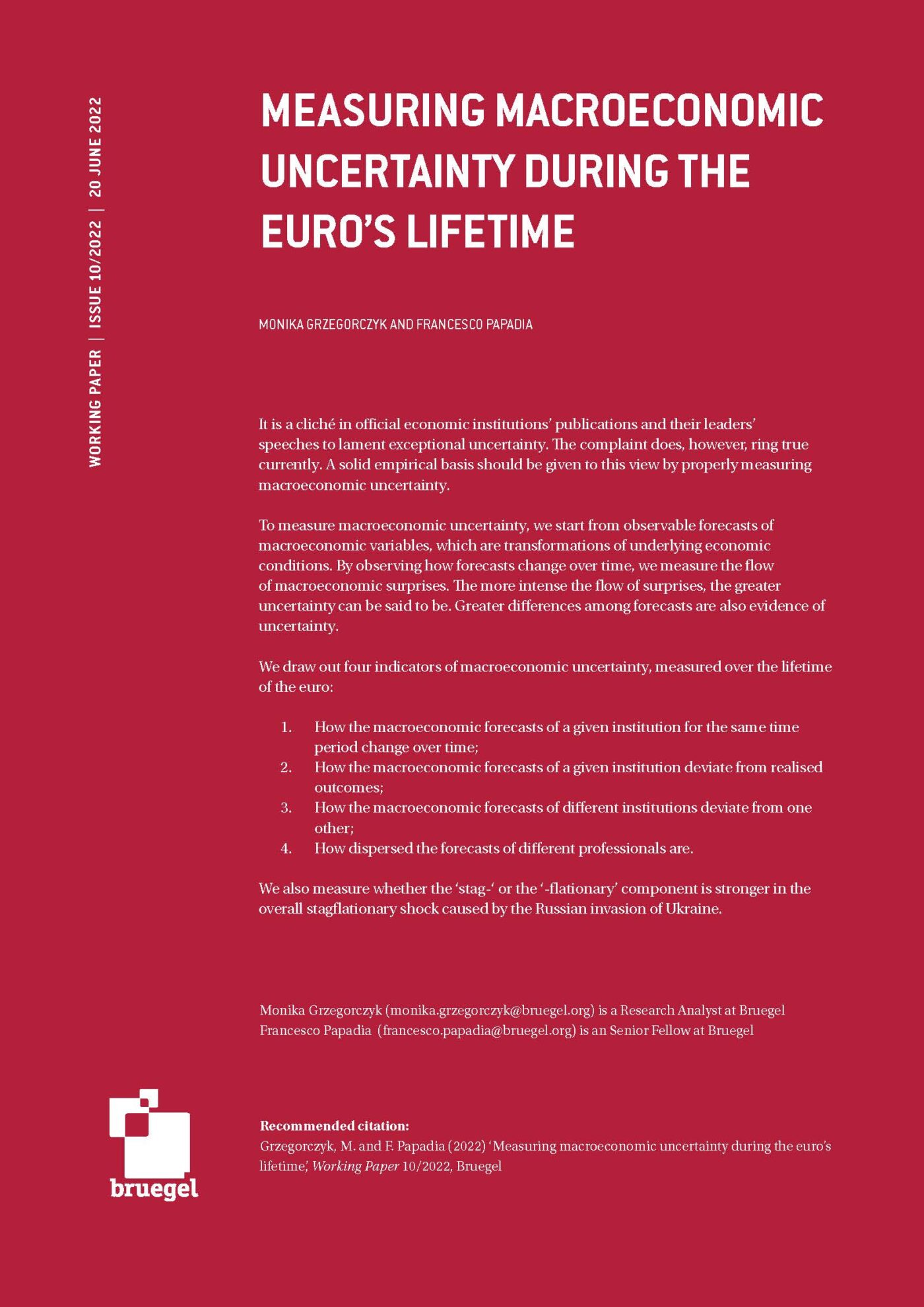Blog Post
Preventing bank runs – a primer
Worries about Cyprus at first decreased with the second agreement between the Cypriot government and euro area partners. Controversially, however,capital controls have been used as a way to prevent an outright bank run. This blog briefly reviews the literature on bank runs and comments on different ways to prevent them.
Worries about Cyprus at first decreased with the second agreement between the Cypriot government and euro area partners.[1] Controversially, however, capital controls have been used as a way to prevent an outright bank run (see Darvas and Wolff 2013 and Wolff 2013). This blog briefly reviews the literature on bank runs and comments on different ways to prevent them
Diamond and Dybvig (1983) showed that deposit-taking banks are vulnerable to a bad equilibrium where all depositors rush to withdraw their money simultaneously without the bank being able to repay them. This is because of the mismatch between liquid liabilities and illiquid assets, which renders it impossible for banks to reimburse all deposits instantaneously. Crucially, bank runs can be triggered not only as a result of negative new information about the solvency of a bank, but also as a self-fulfilling prophecy.[2]
To prevent the economically destructive recalling of loans once a stampede starts, banks subject to a run need to find an alternative source of liquidity. If there is little doubt about the solvency of the institution, interbank markets are able to provide this. The fall of Lehman Brothers showed though that these markets can seize up in situations of high uncertainty. Therefore more secure institutional arrangements are needed.
These are primarily the suspension of convertibility (up to a limit) and/or deposit guarantees. Both aim to ensure depositors that they will be able to withdraw their money when they need it instead of feeling forced to do it immediately. Capital controls can be considered a weaker, although often longer lasting, form of suspension of convertibility. Instead of limiting access to cash, they only confine it in a given geographical area.
However, bothsuspension of convertibility and deposit guarantees also have their weaknesses. Limits to convertibility can prevent not only panic-induced withdrawals but also restrict access to cash for households that genuinely need it. Ennis and Keister (2009) argue that such limits are therefore time inconsistent. Because governments are unwilling or find it hard to implement them, suspension of convertibility is not necessarily enough to prevent bank runs. A deposit guarantee system is more robust. Ultimately though, it is only as good as the creditworthiness of its guarantor.
An alternative way to respond to banking panics is for the central bank to perform its lender-of-last-sort (LOLR) function (Bagehot 1873). Nevertheless, it is primarily a complement and not a substitute to a deposit insurance system. The former primarily deals with illiquidity whereas the latter ensures depositors that they will be repaid even if a bank goes bankrupt. Deposit insurance aims to prevent a liquidity crunch by depositors whereas the LOLR is meant to ensure the provision of liquidity as a response to a dearth of general liquidity, not only deposits.
LOLR is less certain to prevent a bank run than a deposit guarantee because the central bank is only allowed to lend against eligible collateral and because it requires discretionary action, which renders it less certain than pre-specified rules (Cecchetti 2007). If depositors fear that banks are insolvent they have a reason to doubt that central banks will save them. This comes with Goodhart’ (1999) qualifier that it is difficult for central banks to ensure the solvency of the counterparty when acting as a LOLR. If a bank cannot obtain financing from the market, it most often means that its solvency is in doubt.
Repullo (2000) studies if it is better to allocate the responsibility for LOLR to the deposit insurance agency or the central bank. The division matters because of agency considerationsif the two institutions are primarily interested in their individual instead of social benefit. Repullo shows that if liquidity shocks are sufficiently small, it is optimal to entrust the central bank with LOLR responsibilities. Conversely, in the case of large shocks the deposit insurance system is the better guardian of the LOLR facility. The deposit insurance is always too stingy relative to social optimum to provide liquidity whereas the central bank is too lenient in the case of small shocks and even stingier than deposit insurance in case of large shocks.
The result stems from the fact that for small shocks the central bank prefers to avoid the certain cost of liquidation in favor of a positive probability of a loss on its loan. As the expected loss for the central bank increases with the size of the loan though, it becomes less and less willing to provide liquidity in the case of a large shock even if this would be socially optimal. The deposit insurance corporation on the other hand does not face increasing losses as a function of the size of the shock, because its maximum liabilities are capped by the total amount of deposits. However, this result depends on the assumption that banks only finance themselves with deposits that are fully insured. If this is not the case, the interests of the two agencies become more similar in case of a large liquidity shock. This leads to an expanded range of shocks for which the central bank should be the LOLR.[3]
Another relevant issue is the distinction between essentially random self-fulfilling runs and those based on revealed information about banks’ (in)solvency because they imply distinct optimal policy responses. If a run is random, there should be no costs to government from deposit guarantees and liquidity provision. Indeed, deposit insuranceshould prevent the run in the first place and inhibit any damage to the real economy. But if governments guarantee the liabilities of banks that are in fact insolvent, the fiscal costs of accommodating policies tend to be high (Honohan and Klingebiel 2003). Furthermore, Claessens et al. (2005) argue that government support during these ‘real’ banking crises does not even accelerate the subsequent recovery (even the contrary). The optimal policy in these cases is to restructure the banking system. To allow this to be done in the most efficient manner, governments should ensure the existence of a proper institutional resolution framework.
References
Allen, Franklin & Douglas Gale, 1998. "Optimal Financial Crises," Journal of Finance, American Finance Association, vol. 53(4), pages 1245-1284, 08.
Bagehot, Walter 1873, “Lombard Street: A Description of the Money Market”, revised edition with a foreword by Peter Bernstein. New York: Wiley (1999).
Cecchetti, Stephen, 2007, “Subprime Series, part 2: Deposit insurance and the lender of last resort”. VoxEU column. http://www.voxeu.com/article/subprime-series-part-2-deposit-insurance-and-lender-last-resort
Claessens, Stijn & Daniela Klingebiel & Luc Laeven, 2005, “Crisis Resolution, Policies, and Institutions: Empirical Evidence” in eds. Honohan, Patrick & Luc Laeven, 2005, “Systemic Financial Crises: Containment and Resolution”.
Darvas, Zsolt & Wolff, Guntram, 2013, “It is not yet too late to drop the idea of capital controls in Cyprus, Bruegel blog 27.3.2013. /nc/blog/detail/article/1061-it-is-not-yet-too-late-to-drop-the-idea-of-capital-controls-in-cyprus/#.UVqSpReLCSo
Diamond, Douglas W & Dybvig, Philip H, 1983. "Bank Runs, Deposit Insurance, and Liquidity," Journal of Political Economy, University of Chicago Press, vol. 91(3), pages 401-19, June.
Huberto M. Ennis & Todd Keister, 2009. "Bank Runs and Institutions: The Perils of Intervention," American Economic Review, American Economic Association, vol. 99(4), pages 1588-1607, September.
Goodhart, Charles A E, 1999. "Myths about the Lender of Last Resort," International Finance, Wiley Blackwell, vol. 2(3), pages 339-60, November.
Gorton, Gary, 1988. "Banking Panics and Business Cycles," Oxford Economic Papers, Oxford University Press, vol. 40(4), pages 751-81, December.
Honohan, Patrick & Klingebiel, Daniela, 2003. "The fiscal cost implications of an accommodating approach to banking crises," Journal of Banking & Finance, Elsevier, vol. 27(8), pages 1539-1560, August.
Kahn, Charles M. & Santos, Joao A.C., 2005. "Allocating bank regulatory powers: Lender of last resort, deposit insurance and supervision,"European Economic Review, Elsevier, vol. 49(8), pages 2107-2136, November.
Repullo, Rafael, 2000. "Who Should Act as Lender of Last Resort? An Incomplete Contracts Model," Journal of Money, Credit and Banking, Blackwell Publishing, vol. 32(3), pages 580-605, August.
Saunders, Anthony & Wilson, Berry, 1996. "Contagious Bank Runs: Evidence from the 1929-1933 Period," Journal of Financial Intermediation, Elsevier, vol. 5(4), pages 409-423, October.
Wolff, Guntram, 2013, “Capital controls will put euro at risk”, Bruegel blog 26.3.2013, /nc/blog/detail/article/1060-capital-controls-will-put-the-euro-at-risk/#.UVqQBReLCSo
[1] http://www.consilium.europa.eu/uedocs/cms_data/docs/pressdata/en/ecofin/136487.pdf
[2] For a model of an information-based bank run, see e.g. Allen and Gale (1998). Gorton (1988) and Saunders and Wilson (1996) have shown that most bank runs are indeed based on revealed information about banks’ increased insolvency risk.
[3] Kahn and Santos (2005) develop Repullo’s model further for example by studying the incentives for information sharing between different regulators.
Republishing and referencing
Bruegel considers itself a public good and takes no institutional standpoint. Anyone is free to republish and/or quote this post without prior consent. Please provide a full reference, clearly stating Bruegel and the relevant author as the source, and include a prominent hyperlink to the original post.







